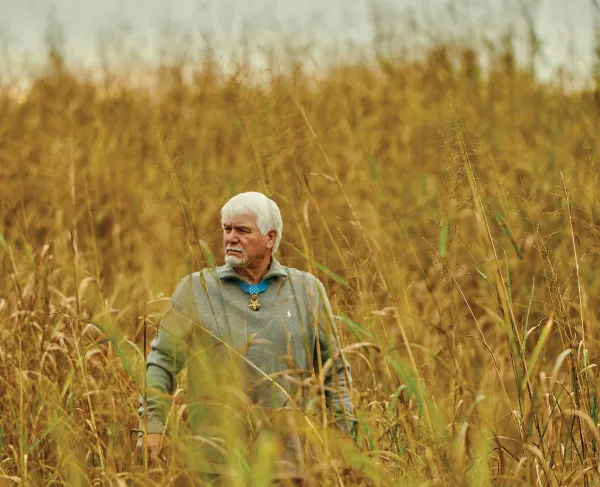
In December 1862, Colonel John T. Wilder’s brigade of Brig. Gen. J. J. Reynolds’ infantry division of the Army of the Cumberland – the 17th, 72nd and 75th Indiana and the 98th Illinois – was ordered to pursue a column of Confederate cavalry raiders led by Brig. Gen. John Hunt Morgan. Through December and into January 1863, the Union foot soldiers plodded through miserable weather in a fruitless attempt to keep pace with the fast-moving cavalry. In a desperate bid to even the contest, Wilder ordered his men to mount the mules used to haul the brigade’s supplies. But the mules, unused to saddles and riders, proved useless.
While Wilder’s men chased Morgan, the main Union army gained a critical victory at the Battle of Stones River. Yet during the short campaign, the Union cavalry performed badly almost costing Maj. Gen. William Rosecrans a victory. Thus, on January 14, 1863, Rosecrans set out to bolster his mounted arm by asking Washington for resources to mount 5,000 men.
Meanwhile, Wilder’s command returned to army headquarters at Murfreesboro. Wilder went directly to his commanding general and, according to one contemporary, declared “If you will mount my men on horses and furnish them with the kind of arms I want, we will chase John Morgan and Bragg’s cavalry to hell.” On February 16, Rosecrans authorized the plan. Wilder let the troops decide if they wanted to become a mounted force and of the brigade’s four regiments, all but the 75th Indiana supported the transition. The Hoosiers were transferred to a regular infantry command and the 123rd Illinois, whose men were enthusiastic about becoming mounted infantry, was transferred in.
In late February, Wilder began the job of mounting his troops. He impressed horses from civilians and by March 2, the first full regiment, the 17th Indiana, was mounted. By mid-April he had supplied horses for the entire brigade. The brigade remained administratively connected to their old infantry command, and though their daily routines now included caring for their mounts, they continued to identify themselves as infantrymen. As one soldier put it, “[w]e are to fight as Infantry but are to do all our marching on horseback.” They performed infantry drill, carried infantry equipment, and went so far as to remove the yellow cavalry trim from the mounted services jackets they were issued.
While the men were being mounted, Wilder worked to add power to his force by obtaining repeating rifles. But the army refused to issue such guns to the brigade. Undeterred, Wilder hatched a plan -- each soldier would buy a Spencer repeating rifle with his own money. The men unanimously approved the plan. Wilder mortgaged his factory in Greensburg, Indiana, borrowed money from a local bank, and cosigned promissory notes from each of the men to guarantee the repayment of each $35 gun. When the guns arrived, the men began familiarizing themselves with them and found them just to their liking. After several days of practice, one soldier wrote “No rebel could stand the racket of those repeating rifles when once brought to bear upon them.” Thus, by mid-May, the brigade was ready for the field.
Though Rosecrans had long delayed an advance in Tennessee on June 24 he launched his army against the Confederate position near Tullahoma, Tennessee. Wilder’s brigade led the advance of Maj. Gen. George H. Thomas’ 14th Corps against Hoover’s Gap, one of three passages through a range of hills, through which Rosecrans’ army would have to traverse to attack the Confederate army.
The narrow gap was fraught with danger but taking and holding it was critical for success. Thomas assumed it would take several days and very hard fighting to achieve his objective. He was stunned when Wilder’s men quickly scattered the Confederate cavalry outpost guarding the gap, then pressed through the defile and took up a strong position on the high ground on the south end of passage.
Though outnumbered, Wilder’s men repulsed heavy counterattacks and opened the way forward. The victory at Hoover’s Gap sent the rebels scrambling southward. Short, relatively bloodless, and decisive, the Tullahoma Campaign transformed the war in the west. And, as the Cincinnati Gazette put it “the first and most critical step of the campaign was won by Wilder’s soldiership.”
Rosecrans paused for several weeks to refit and prepare for his next move. When the army advanced in August, Wilder’s men played a key role. Sent north, they helped create a diversion that convinced Confederate Gen. Braxton Bragg that the Union army would cross the Tennessee River above Chattanooga. In truth, Rosecrans aimed to cross south of the town. Wilder’s men operated near the river and on August 21, moved toward the hills opposite Chattanooga. The brigade’s artillery battery, the 18th Indiana, bombarded the town for several days. On September 9, the brigade took part in the capture of Chattanooga.
Wilder’s men then pushed into Georgia guarding the army’s left flank. In mid-September, when the army was recalled and desperately marched to reunite near Crawfish Springs, Wilder’s men protected vital crossing points on Chickamauga Creek. On September 18, they thwarted a rebel advance at Alexander’s and Reed’s Bridges giving Rosecrans a critical day to reunite his army. During the fighting on September 19, the brigade held off heavy Confederate attacks and helped stabilize the Union right flank. The next day, when Lt. Gen. James Longstreet’s command broke the Union center, Wilder’s men held off advancing Confederates and provided critical cover for the retreating army.
Though defeated at Chickamauga, Rosecrans held Chattanooga. Wary of attacking the strong entrenchments put up by the Union army, the Confederates attempted to starve Rosecrans’ men into submission. Only one route – a treacherous road over Walden’s Ridge – remained open and on it came all the supplies sustaining the army. Wilder’s men performed scouting duty west of town and kept the supply line open.
In October, Maj. Gen. Ulysses S. Grant took charge of all operations in the west. Grant made his headquarters in Chattanooga. He relieved Rosecrans from command, replaced him with George H. Thomas, and reorganized the army. In that reorganization, Wilder’s brigade was transferred from the infantry to the cavalry corps where they would serve in the Atlanta Campaign and beyond.
Help the Trust save 161 acres across consequential Western Theater battles — Fort Heiman and Fort Henry, Brown’s Ferry/Chattanooga, Spring Hill, and...
Related Battles
16,170
18,454
5,824
8,000


